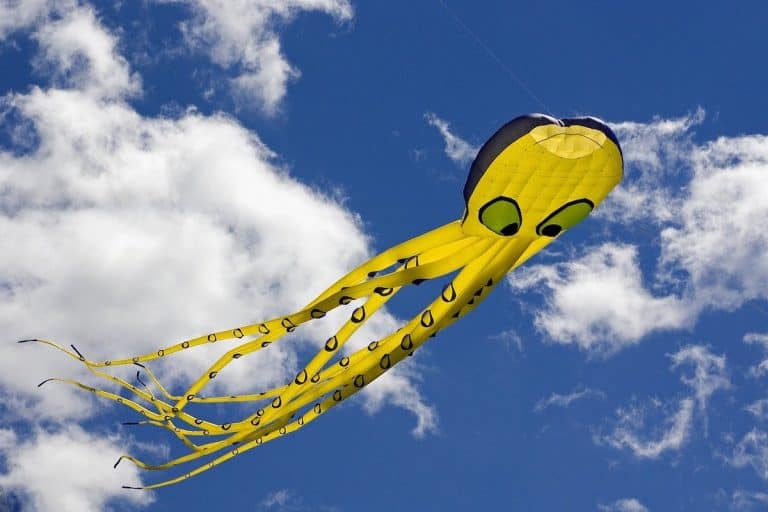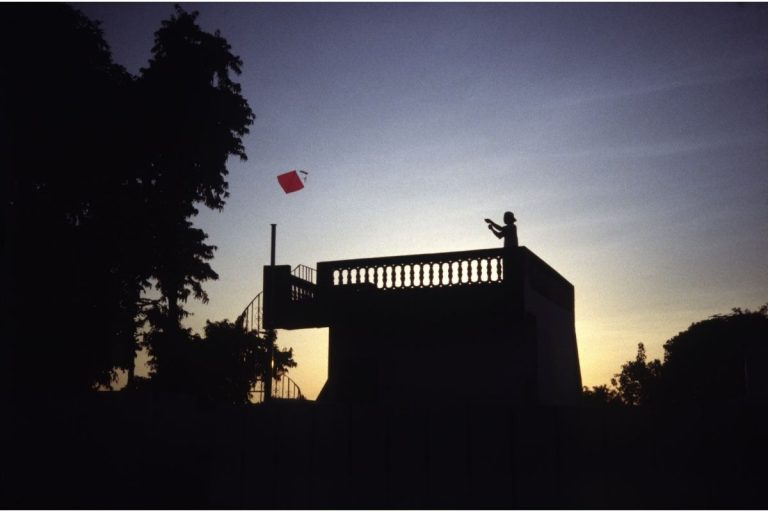How Many People Get Electrocuted Flying A Kite? (We Ask The Experts)
Are you wondering if people are in danger of getting electrocuted while flying a kite? There have been instances of people being electrocuted, especially kids, when their kites touch a power line. But are how many instances are there?
Between lightning and thunderstorms, around 80 people die every year in the United States. Around the world, a few people die every year because they are electrocuted while flying a kite.
How do people get electrocuted while flying a kite? This article explains how it can happen and what you can do to prevent it.
Can You Get Electrocuted By A Kite?
The main danger in flying a kite in connection with electricity is to be around a power line. When a kite touches a power line, electricity can move through the strings and get to the person operating the kite. One could argue that the strings are not able to conduct electricity.
However, the voltage of a power line is extremely high, and even a little bit of humidity can act as a conductor.
Even a little bit of metal could be instrumental in passing through electricity, especially a high voltage that can pass through a high resistance. It is more than enough to harm a person.
One should not underestimate the potential danger of coming in contact with a power line, thunder, or lightning. For example, scientists have estimated a lightning flash is 3000 million volts, and thunder has a relative intensity of 10 million or 100 million volts.
Encountering thunder or lightning flash is way more dangerous and fatal. With such a high voltage, even a slight conductivity will get to the person operating the kite.
While kites are a great hobby for kids and adults, verifying the surroundings and weather conditions is likewise essential.
Can You Fly A Kite During A Storm?
A storm occurs where the atmosphere is disturbed by strong winds, rain, thunder, lightning, and even snow. Strong winds and heavy rain can prevent anyone from flying a kite. However, the occurrence of lightning and thunder are by far the most concerning.
When a storm produces a flash of lightning, there is the possibility that a channel develops toward the earth’s surface, and it can strike objects that are roughy at 100 yards from the ground. It is why lightning can hit trees, skyscrapers, and tall structures.
During a storm, the air is charged with electricity, and tall objects can produce connective sparks, increasing lightning strikes. Kites flying in such weather conditions, especially those including metallic components, are dangerous because they are a better conductor for electricity. In addition, high voltage currents allow electricity to flow through the air, aggravated by rain or humidity.
Dry strings would not stop it, and the kite operator would get struck. While you may never see someone struck by lightning, know that around 2000 people worldwide are killed by lightning every year. Flying on a kite during a storm can only increase the possibility of becoming part of this statistic.
Can A Human Survive A Lightning Strike?
Lightning strikes can be deadly. Based on data covering the past 30 years, at least 10% of those struck by lightning have died, while survivors have serious injuries. Those who survive can suffer from confusion, cardiac arrest, memory problems, muscle aches, deafness, chronic pains, and even personality changes.
A direct strike is more dangerous than a side flash, conduction, or ground current. For example, when flying a kite is easier to get electrocuted by conduction, which means that lightning can travel long distances through wires or a path. But, you cannot exclude any other form of a lightning strike.
For example, one can go out with a kite and be the effect of a side flash. In this case, lightning can strike a taller object nearby, and a portion of the electricity reaches a person. Likewise, it can be the case when a person takes shelter under a tree for protection.
The worst thing that can happen is a direct strike, which means lightning hits a person in an open space. In this case, the amount of current moving through the body can be fatal. There are few chances to get directly hit by a strike, but it cannot be excluded.
Why Is It Dangerous To Fly A Kite Near Power Lines?
Kites can get tangled in an overhead power line easily. It is dangerous to fly a kite near a power line. When this happens, kids or parents try to retrieve the kite and get electrocuted.
But, it can happen that when the kite toches the power line, the electricity could start to travel immediately down the cord to the operator.
Therefore, there are a few safety guidelines to follow. The first one is not to fly a kite near a powerline. But if the kite still hits a powerline, one should immediately let go of the stings or control wire. It is imperative not to try to retrieve or even pull the kite trying to release it.
One should walk away and stay distant from the power line and the kite and call the emergency number so that professionals can come and safely retrieve the kite. Power lines can carry up to 7000 volts. If it finds its way down to the ground can be fatal; the cost of a kite is not worth the risk.
Related Questions
Is Kite Flying Safe?
Flying a kite is generally safe. However, kite operators should follow simple rules to ensure no accidents. For example, you should avoid areas with electric powers lines.
In addition, one should avoid airports, extreme winds, stay away from crowds of people, do not fly near roads, avert storms.
In addition, it is always a good idea to check the surroundings to make sure not to run into rocks or holes.
Is There A Height Limit For Kites?
Typically you can operate a kite only under 150 feet above the earth’s surface. To fly above this limit is necessary to ask permission from the FAA ATC. In addition, some countries have regulations on where it is possible to fly a kite.
For example, it is forbidden to fly a kite near airports, restricted areas, defense facilities, government buildings, and more. It is also forbidden to fly kites when there isn’t enough light.
Where Is It Safe To Play With A Kite?
It is safe to fly a kite in a large area free of trees and power lines, far from any road or airport. However, it is essential to ensure that there isn’t a wild animal in the area if there are small children around.
Also, it’s best if it’s good weather. In addition, it is crucial to stay at a safe distance from other people flying kites to avoid tangling and make sure that if the kite crash, it will not hit someone’s property.
Can You Fly A Kite In The Rain?
It is possible to fly a kite in the rain as long as there is wind to keep it afloat. However, it is not safe if there are thunderstorms or lighting. On a not too windy day, a light rain would still allow the kite to fly and with particular safety.
But, too much rain can create other problems for those operating the kite, and if there is too much rain coming down, the kite would not be able to stay in the air.
Sources
- https://www.weather.gov/safety/lightning-odds
- https://www.weather.gov/safety/lightning-victims#:~:text=Lightning%20Resources&text=Lightning%20kills%20an%20average%20of,the%20victims%20and%20the%20survivors.
- https://www.thesun.co.uk/news/16066867/son-12-electrocuted-flying-kite-metal-wire-power-line/
- https://www.livescience.com/65055-thundercloud-voltage-mapped-with-muons.html
- https://crea.coop/safety-articles/electricity-and-kites/
- https://en.wikipedia.org/wiki/Lightning
- https://www.sciencefocus.com/science/is-it-safe-to-fly-a-kite-in-a-thunderstorm





